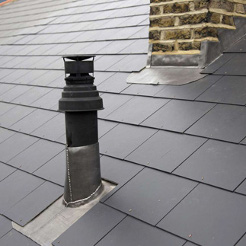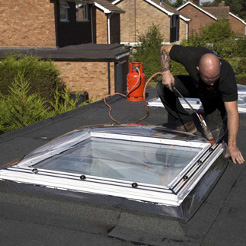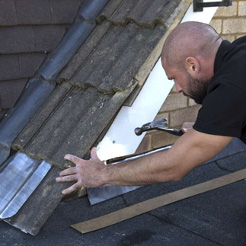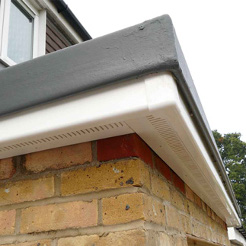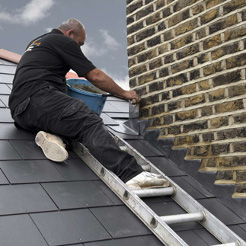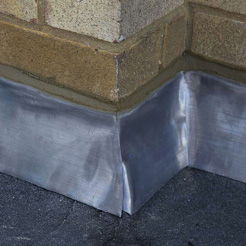Flat roofs have been making a comeback in recent years, thanks to design innovations that offer extended life-spans, ease of maintenance and resistance to the often unpredictable British weather. In the past, flat roofs were often regarded as poor alternatives to traditional sloping roofs. These days, flat roofs are back in style and are a favourite of leading designers and architects.
The construction of flat roofs is horizontal, but a slight gradient is necessary to allow for the drainage of rainwater. The exact gradient can vary from 1:40 to 1:80.
Flat roofs are ideal for structures that are not a part of the standard living area, such as house extensions, garages and garden structures. Flat roofs are also used in botanical gardens, solar panels and roof top patios, often designed with striking visual flair and originality.
So, what makes a good flat roof?
Roofing membrane
The key to a good flat roof is a good membrane. The membrane needs to not only waterproof the roof area, but also to allow water to run down the roof gradient into a gutter system. There are many roof membranes to choose from but there’s no industry consensus on which one is the best. The choice is down to personal preference and supplementary factors such as the price and the manufacturer’s guarantee.
Leading roofing membrane options include:
- Torch-on-felt: Very cost-effective and stands up well to foot traffic.
- PVC single-ply membrane: Good value for money but needs specialist installation.
- EPDM rubberised roofing: Very durable, waterproof and protects against UV light.
- GRP fibreglass: Paint-on solution that allows maximum flexibility during installation.
End use
The end use of the flat roof must always be taken into account as the weight of some membranes could cause deflection. It is also an important factor when looking to install solar panels on the roof.
Roofing foundation
The roofing foundation provides the vital support structure holding up the roof, so it must be strong enough to withstand the stresses and strains of different loads and conditions. If there is insulation between the roof joists, the area must be well ventilated to avoid build-up of moisture and damp.
Suitable falls
A good flat roof needs to be able to clear surface water as quickly as possible. The slope of the joists provides the required falls for efficient drainage. Falls in the roof structure can be achieved by adjusting the height of the supporting beams, by using tapered supports, or by installing firring pieces (tapered battens) before the deck is laid.
U-Value
U-values measure how effective the roofing material is as a heat insulator. The lower the U-value is, the more insulation is provided. British building regulations specify U-values for both new and refurbished flat roofs, which a professional roofing contractor will be able to advise you on.
Installation
A good quality membrane installed by a contractor who is trained and approved for that particular product is the best guarantee of a good flat roof. Every installation is different and an experienced contractor will carefully consider all relevant factors about the building, the state of the existing roof (if there is one) and the intended use of the flat roof.
Want to know more about flat roofs? Just ask our friendly team at Roof Rescue. We’re experts in anything to do with roofs, flashing included! Call us on 020 3189 1618 and we’ll be delighted to answer all your questions.

